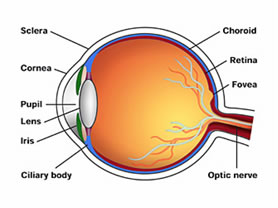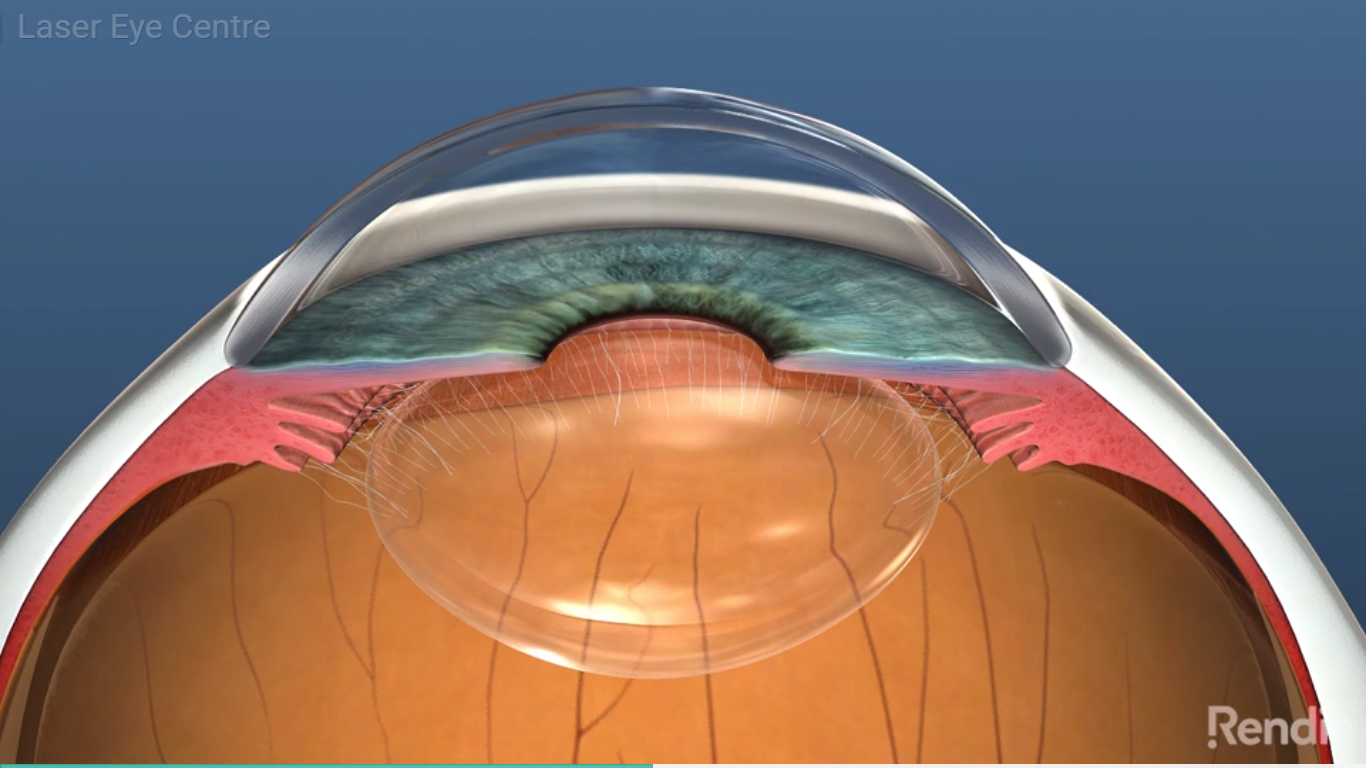The human eye is the organ which gives us the sense of sight, which allows us to learn more about the surrounding world than any of the other senses. The eye allows us to see and interpret shapes, colours, and dimensions of objects in the world by processing the light they reflect or give off. The eye is able to see in dim light or bright light, but it cannot see an object when light is absent. The eye changes light rays into electrical signals then sends them to the brain, which interprets these electrical signals as visual images. Among the more important parts of the human eye are the iris, cornea, lens, retina, conjunctiva, the macula, and the optic nerve. These are seen in the diagram below:
The cornea is a part of the eye that helps focus light to create an image on the retina. It works in much the same way that the lens of a camera focuses light to create an image on film.
The bending and focusing of light is also known as refraction. Usually the shape of the cornea and the eye are not perfect and the image on the retina is out-of-focus (blurred) or distorted.
These imperfections in the focusing power of the eye are called refractive errors. When the cornea, lens or eye is not normal, light cannot focus accurately on the retina and the image is blurred. The eye is like a camera in the way it captures and focuses the light.
Here is a step-by-step guide of how the eye works to provide you with vision:




